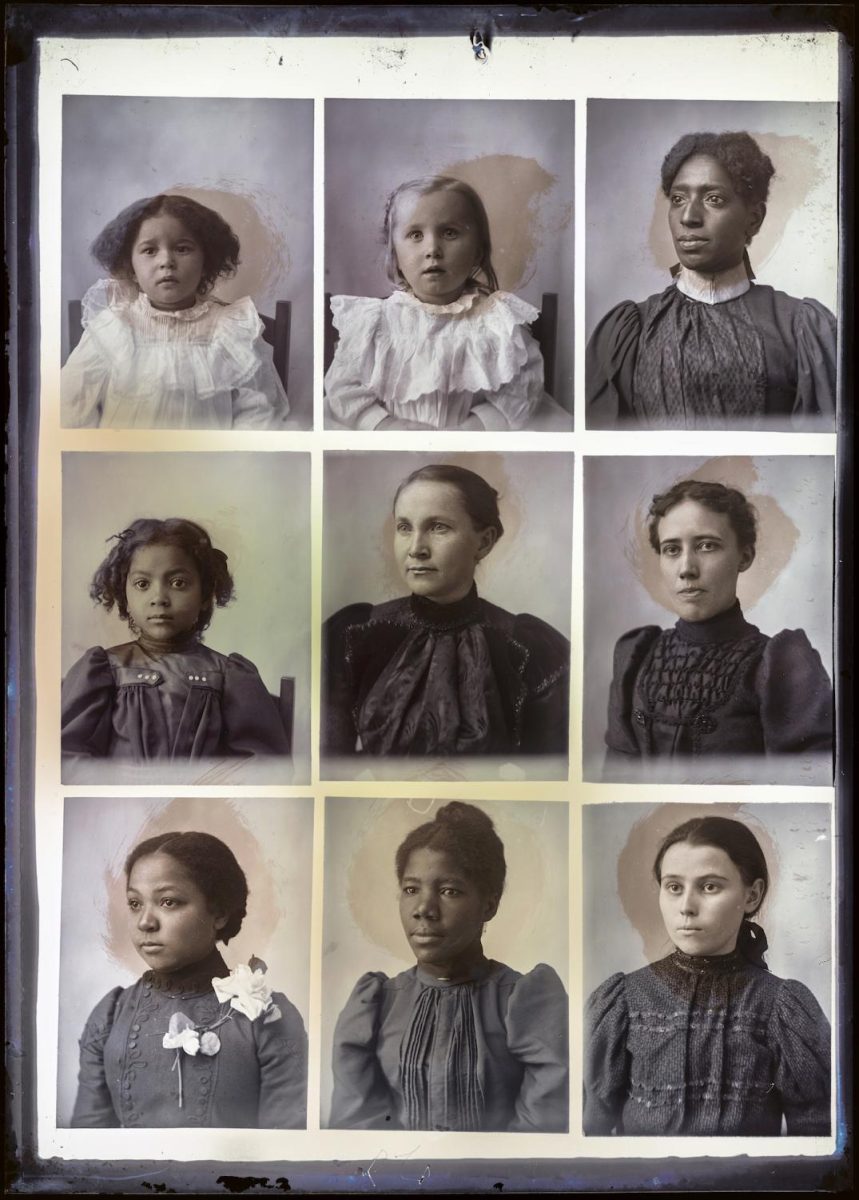Professor talks about representation in photo gallery for Black History Month
An archived photo from Kathryn Mayo’s art gallery exhibition. In this photo, Mayo talked about how Hugh Mangum was an itinerant photographer, who migrated from place to place.
Photography Professor Kathryn Mayo presented a photo gallery exhibition titled “Bearing Witness” using archival photographs at Cabrillo Gallery on Feb. 21.
As a photography professor at Cosumnes River College, Mayo said she is deeply interested in the representation of people via the lens of photographic history. In conjunction with Black History Month, Mayo utilized the gallery to spark a conversation about representation of race in America.
“Black students experience different representation with slaves being a prominent subject in early daguerreotypes,” Mayo said. “I look for a more balanced representation.”
To combat this, Mayo talked about her desire to show examples that deviate from the norm to encourage discussion amongst her students. Her goal is to provide agency for the people being represented by the photographic medium.
“Photography is a very powerful way to represent ourselves and others,” said Patty Felkner, fellow photography professor at CRC, after she attended the exhibition. “As professors at CRC, we have an obligation to use this power to create content for our students so they can engage in a healthy way.”
Mayo relished in showing images that aren’t common in public spaces. “Bearing Witness” digs through the archives to find images that challenge preconceptions of Black representation.
“My hope is that viewers will curiously peer into the past, see a world that might seem new,” Mayo said.
Mayo said she is keen on displaying images of Black joy in her gallery, to show the richness of Black history that goes beyond the common images.
“It wasn’t until recently that I was shown photographic proof that there was joy in Black History,” said Trevis Washington, a student of Mayo’s who attended the gallery. “Almost all imagery that I saw from earlier time periods was of injustice and misery.”
It was comforting to know that these images existed and that Black photographic history is not relegated to misery, Washington said. This kind of representation matters.
Mayo grew up in Selma, Alabama which gave her a unique perspective on representation and race. She said the city is a complicated place to be from.
There was one key event, she said, that challenged her. Mayo recounts when her school was desegregated.
“About 95% of my white classmates moved to private schools,” she said.
This abrupt flight of white students, while she stayed and expanded her social circles, made her question why her friends would even want to leave, she said.
Couple this with a burgeoning love for historic images – due to discovering a treasure trove of old photographs from a photographer who had traveled through the county – and Mayo’s interest in representation within portraiture blossomed.
“I think if we were to take a good look at our history and weave Black History into the way we tell our stories, the way we tell our history, I think we’d have a much more nuanced and better represented history,” said Mayo.
“Bearing Witness” exudes that deeply. Mayo said she sees this as a manifestation as her, and photography’s, relationship with Black history. It is a statement on representation that works to bring attention to representation during Black History Month.

